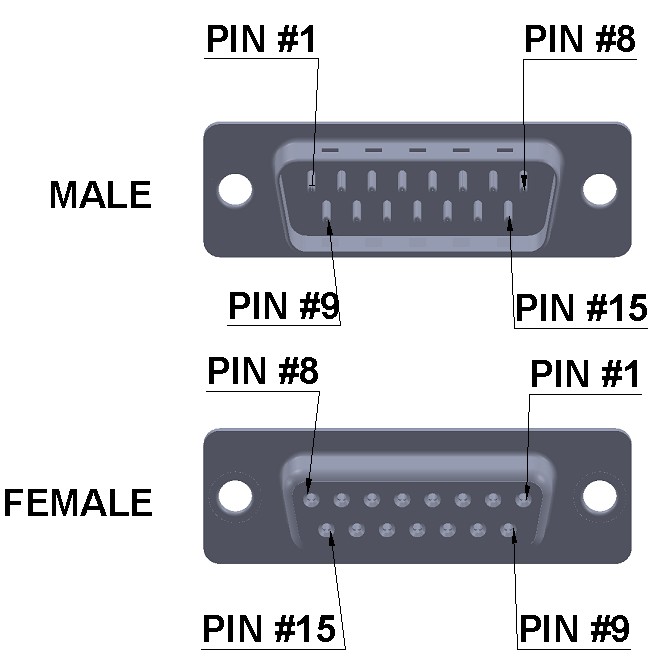The DB15 connector, a member of the D-Subminiature (D-Sub) family, is a 15-pin analog socket known for its distinctive D-shaped shell. This comprehensive guide delves into the Db15 Pinout, exploring its various types, termination styles, and common applications. Understanding the DB15 pinout is crucial for anyone working with serial and parallel ports, particularly in legacy computer systems and industrial applications.
DB15 Connector Types: Soldering, IDC, and Crimping
DB15 connectors are available in three primary types, each employing a different method for wire attachment:
DB15 Connector with Solder Contacts
Solder contacts feature a cavity where a stripped and tinned wire is inserted and soldered. This method provides a secure and permanent connection but requires specialized soldering equipment and skills.
DB15 Connector with Insulation Displacement Contacts (IDC)
IDC connectors are designed for automated assembly, simplifying the wiring process. A flat cable is pressed against the fork-shaped contacts, piercing the insulation and establishing connections simultaneously.
DB15 Connector with Crimp Contacts
Crimp contacts involve inserting a stripped wire into a cavity and then crimping it with a specialized tool. This method offers a balance between security and ease of repair, allowing for pin removal and replacement if necessary.
DB15 Termination Styles: Straight and Right-Angle
PCB-mounted DB15 connectors come in two termination styles:
Straight Termination
Straight termination connectors have pins extending directly from the connector body, suitable for applications where space constraints are minimal.
Right-Angle Termination
Right-angle termination connectors feature pins extending at a 90-degree angle, ideal for tight spaces and applications requiring low-profile connections. This configuration allows for more efficient board layout and cable routing.
DB15 Backshells: Protecting Your Connection
Backshells provide a protective enclosure for the cable-connector junction. They are available in plastic for standard applications and metal for demanding industrial environments, offering enhanced durability and shielding against electromagnetic interference.
DB15 Connector Applications and the Importance of Pinouts
While not explicitly detailed in the original article, understanding the specific pinout (the assignment of each pin to a specific signal) is crucial for using DB15 connectors. Historically, DB15 connectors were frequently used for game port connections and in certain video applications. Different devices and applications utilize different pinout configurations. Consulting the device’s documentation is essential for proper wiring and functionality. Knowing the DB15 pinout is essential for troubleshooting and ensuring correct signal transmission.
Conclusion: Mastering the DB15 Connector
The DB15 connector, with its various types and termination styles, remains relevant in specific applications. Understanding the DB15 pinout and its associated components is vital for anyone working with these connectors. Whether dealing with legacy systems or specialized industrial equipment, a comprehensive knowledge of the DB15 ensures successful implementation and troubleshooting.
